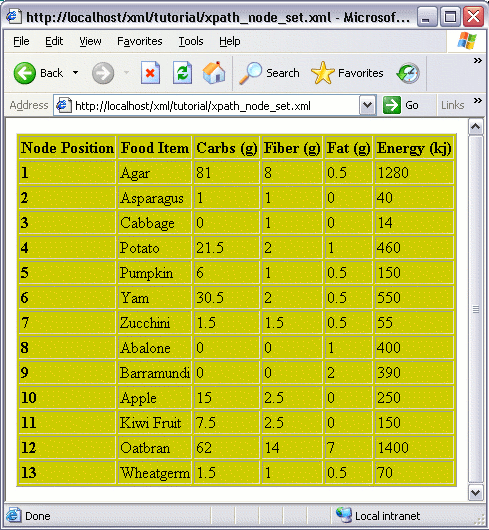XPath Node Set
A node set is a set of nodes. When you write an XPath expression to return one or more nodes, you call these nodes a node set.
For example, if you use the following expression to return a node called title, you will have a set of nodes all called title (assuming there's more than one record).
Node Set Functions
You can use the following functions when working with node sets:
| Function | Description |
|---|---|
| last() | Returns the number of nodes in a node set. |
| position() | Returns the position of the context node (current node). The starting value is 1. As you loop through each node, the position increments. |
| count(node1, node2, ...) | Returns the total number of nodes in the node set as provided between the parentheses. If you leave the parentheses blank, it will use the context node. |
| id((string1, string2, ...) node) | Returns the nodes whose ID matches the string/s passed to the function. |
| local-name(node_set) | Returns the local name of the first node in the node set. The local name is the name without the namespace prefix. To use the context node, simply leave node_set blank. |
| namespace-uri(node_set) | Returns the URI of the namespace of the first node in the node set. To use the context node, leave node_set blank. |
| name(node_set) | Returns the full, qualified name of the first node in the node set. To use the context node, simply leave node_set blank. |
Node Set Function Example
The Source XML File
Imagine we have the following XML file:
The Requirement
Now, imagine we want to display the contents of the file in a table, and that we want to have a counter column that provides the count of each row. Something like this:

The Solution
We could achieve the above requirement using the XPath position() function, as follows: